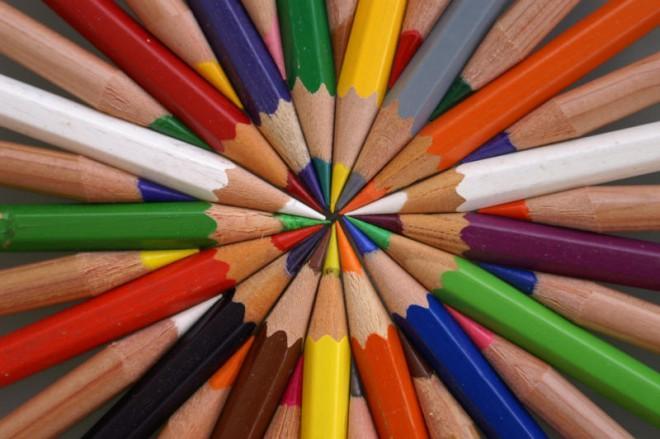So, you must understand and grasp the knowledge of basic design elements. Though you require years of studying and practice to master it, you can still create simple yet beautiful designs with a brief understanding of the eight logo design elements presented in the infographic below by Online Logo Maker.
These elements are the basic building blocks of any visual design.

1. Line
In drawing, a line is a mark connecting two points. It is the most fundamental unit of design. It has a psychological impact with its variation in size and direction.
Lines can be vertical, horizontal, diagonal or curved. Lines can be used to organize, texturize, guide the eye, provide movement, make a statement, and convey universal meanings.
2. Shape
Shapes are two dimensional elements designed by combining lines that enclose an area. They are mostly used to highlight a portion of the graphic. They have height and width, but no depth.
Shapes can be of different forms: circle, square, triangle, rectangle, diamond, etc. The form, size and color of shapes define the nature and mood of the message. Your design contains various shapes so you must be concerned about the interaction between different shapes too.
3. Direction
All lines, whether vertical, horizontal or diagonal, have direction. This element has a great impact on the atmosphere of the design.
Horizontal direction suggests a feeling of rest or repose, a kind of calmness and stability. Vertical direction suggests a feeling of loftiness, a kind of balance and formality. Diagonal direction meanwhile suggests a feeling of movement.
4. Size
Size is the measurement of the physical dimension of the objects. All the objects in the design like shapes, texts, images have a size.
Variation in size of different objects adds more attention and emphasis. Web designers should make plenty of choices about size. They should size the image to sit within the design. The size of texts should be decided according to their importance.
5. Texture
A shape becomes a surface and gains more emotional and “real life” characteristics with the help of texture. Texture can be rough, smooth or glossy. It can make two-dimensional images look three dimensional.
Advertising
Designers can use a variety of textures to increase attention in different shapes and structures in their design. The boring but important portions of the design which often go unnoticed can gain attention with the help of appropriate texture.
6. Color
Colors are the most apparent elements of design. They can directly convey the feelings of a designer to the user. They can be used as a background or can be applied to different elements like shapes, lines and textures.
They create a mood within the small portion of the design. Each color has its own meaning and value. The coherent combinations of different colors can create a harmony and impress the users.
7. Space
Space is the area where the design exists. There can be positive and negative spaces. Positive space is the area where all the objects within the design like shapes, structures, texts, images exist.
Negative space or simply space is the portion that is left blank. Wider spaces can be used to separate different objects in a design. Meanwhile, narrower space is used to develop a relationship between them. Spaces are mostly used to create rhythm and design flow.
8. Value
Value, also referred sometimes as tone, is the relative degree of lightness and darkness of an object. Value is created just by adding an element to the design. To see a line, a shape, a texture or a color, they must require value contrasts.
The differences in value add contrast in the design that will help readers to distinguish different elements. Dark areas suggest drama, gloom or menace. Light areas denote the feeling of happiness, warmth, or closeness.

